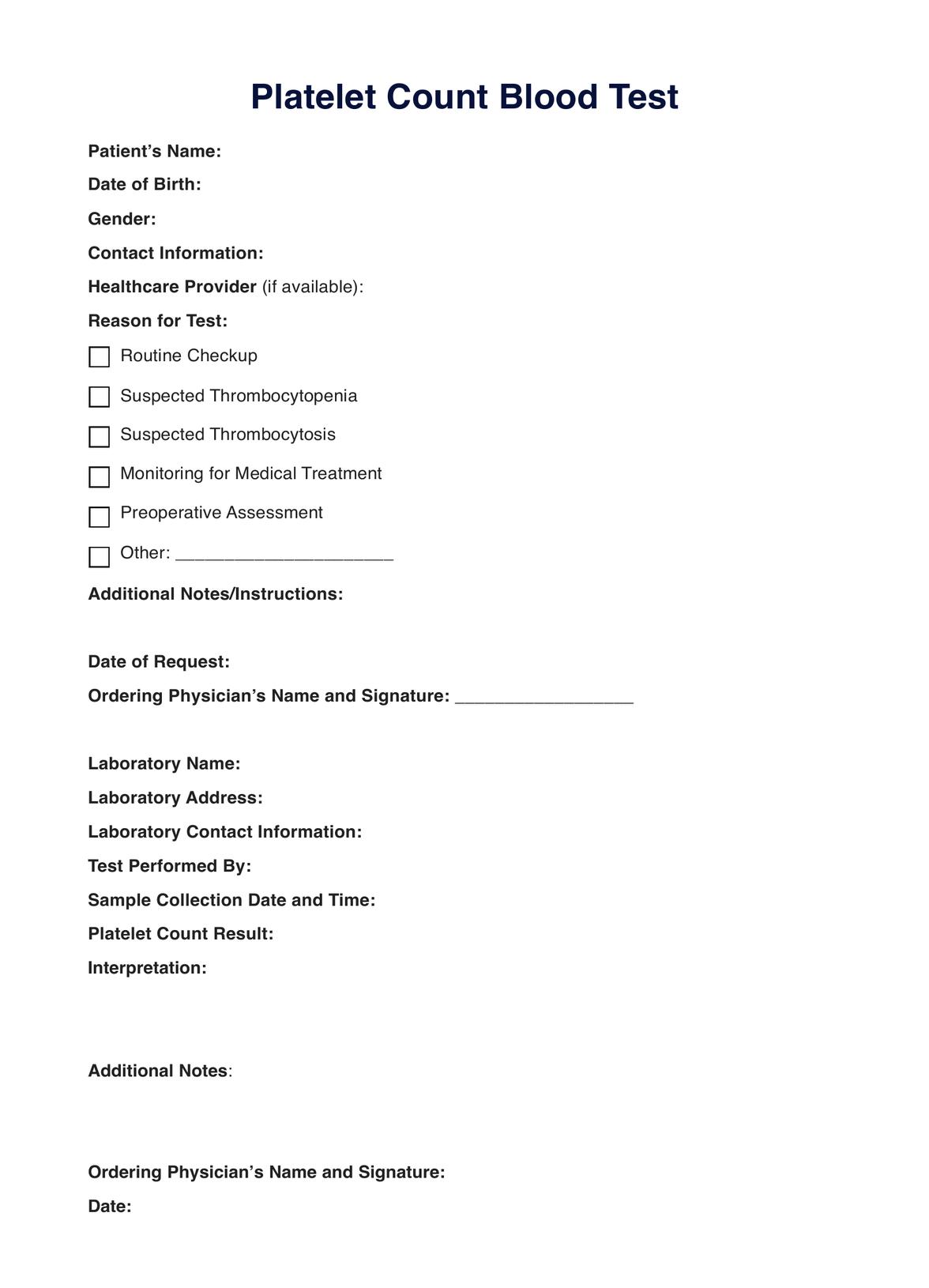General physicians and a specialist like a hematologist are the ones who can typically request a platelet count blood test.

Learn more about the value of the platelet count blood test, its uses, general result interpretations, and more with our comprehensive guide.
General physicians and a specialist like a hematologist are the ones who can typically request a platelet count blood test.
You can use a platelet count blood test for multiple scenarios, such as a routine physical examination, diagnosis, preoperative assessment, and monitoring.
Though the collection will only take a few minutes, the results may take a few minutes or a few days, depending on the laboratory.
EHR and practice management software
*No credit card required
Free
$0/usd
Unlimited clients
Telehealth
1GB of storage
Client portal text
Automated billing and online payments